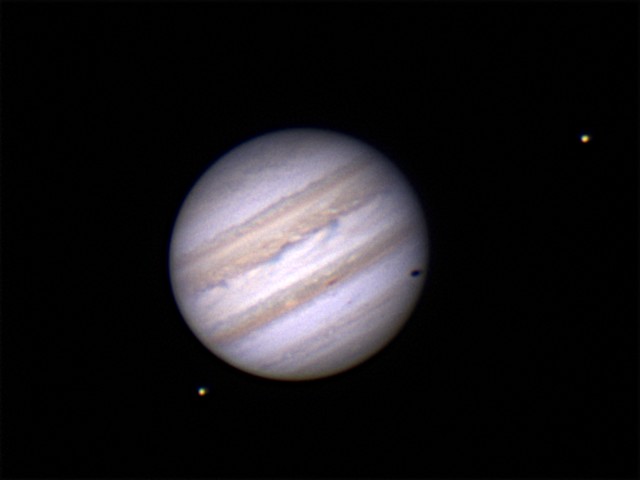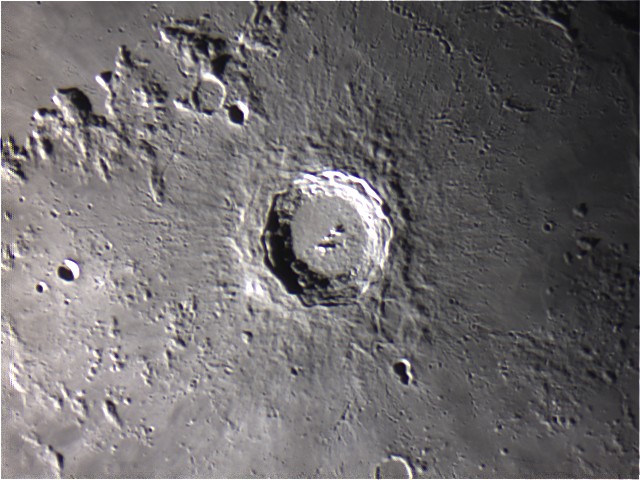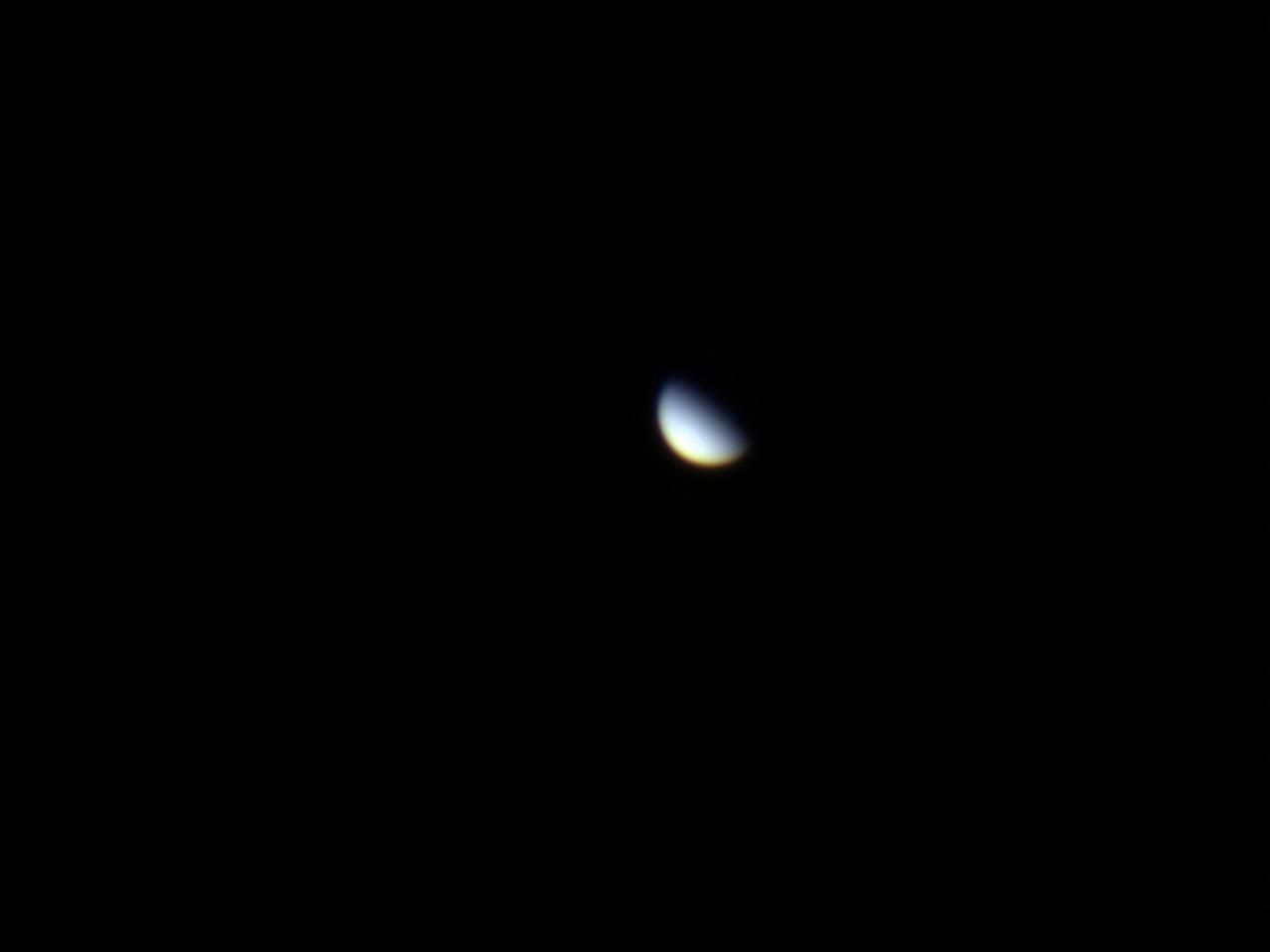It was an early start, 4:30am to be precise, but that’s the only time when you can catch anything really photogenic in the sky from my back garden at the moment as I’ve yet to get beyond the light pollution for the deep sky objects.
So, yes, the early start, at “stupid o’clock.”
It was a beautiful morning. The sky had lost all of the high, con-trail derived cloud from the night before, which had obscured practically everything and the air was still. It was chilly enough to need a hat and fleece but otherwise comfortable. The stars shone but were nothing beside Venus, the Moon and Jupiter.
Seeing as Jupiter had for so long been out of view I immediately slewed the telescope around to point to it, looked in the eye-piece, focused and discovered that the shadow of one of the moons was passing across the face and was close to the edge. I needed to be quick to be able to catch it in an image so rushed the “Imaging Source” camera out of its box, fitted the Baader filter and the Powermate 2.5x magnifier and started up the software.
After some critical focusing I pressed the “Capture” button and streams of data passed onto the hard disk. I’d made it. Little did I know that the first real capture was the best of the night, which, after later processing, produced this image:

5:09am: Jupiter with Europa (lower left) and Io (upper right). Europa’s shadow is just leaving the edge of the face of Jupiter.
After almost an hour of imaging Jupiter, with the glow of dawn swiftly growing, I turned my attention to the Moon. There, in the stark contrast on the edge of the illuminated half sat the crater Copernicus. Such an intricate crater with its ejector field strewn around it. So, this became my second target of the morning:
With light levels increasing and sunrise son to be upon me there was only last target, Venus.
Because I’m hardly ever up this early and because I have no view of the western sky from the observatory I’ve never actually imaged Venus before. This time I didn’t bother removing the camera from the focuser but hoped I’d be able to find the planet using the finder scope only. It took a while to fully centre in on it but eventually I did. After a few minutes of tweaking the exposure, I took my final image of the day:
And so, that was that. I stowed away the telescope, shut off everything, closed the roof and came indoors, and off back to bed for a couple of hours.

